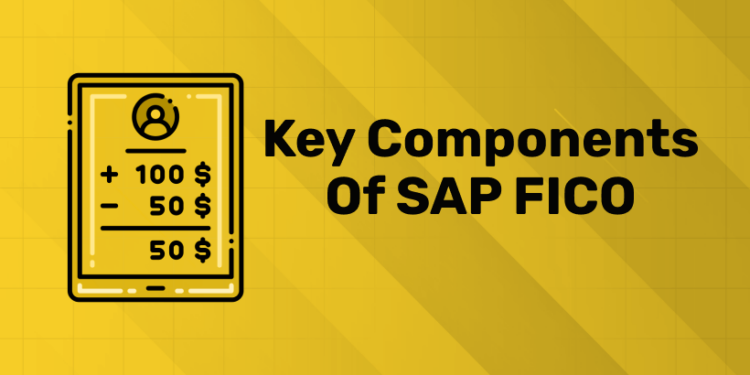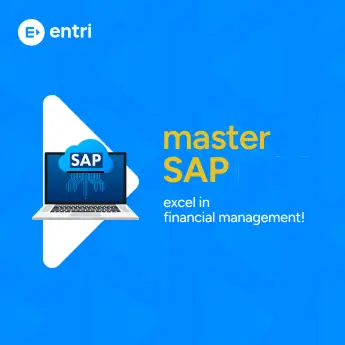Table of Contents
Sap FICO allows organizations to securely store complete versions of transaction data and other financial details. Basically, the main goal of SAP FICO is to help businesses create and manage detailed financial reports for reporting and analysis purposes. Furthermore, by enabling effective reporting and analytics, it will ultimately empower organizations with the technological capabilities to easily adopt complex business strategies and make prudent decisions.
It mainly consists of two Sap Fico modules: finance (FI) and control (CO) and both are applicable for finance purposes. To improve your skills and enhance your position, you should enroll in SAP FICO online training to improve your prospects in the job market.
What is SAP FICO?
SAP FICO is made up of two components: SAP Finance (FI) and SAP Controlling (CO). There are two modules that have been designed for particular purposes. The SAP FI module is responsible for accounting and financial reporting. The CO module is about cost control and financial planning. Business owners can use this software for financial planning and analysis. All of this contributes to making better financial decisions.
Key Features of SAP FICO:
SAP Financial Accounting is one of the most important modules in the SAP ecosystem, and it assists organizations in a variety of industries in storing financial data, assessing the current state of critical financial business processes, and optimizing the productivity of other finance accounting functions within the system. SAP FI also includes pre-built interfaces with other SAP modules and applications, such as SAP Sales and Distribution, Materials Management, and others.
SAP FI Modules:
SAP FI can combine different modules into a single system for a business. This software includes all the necessary features to manage accounts and financial transactions. SAP FICO reports are widely used by banks, tax authorities, regulators and other stakeholders. Financial reports are also generated by software.
SAP FI includes the following sub-modules with specific functionalities:
- General Ledger: This number is used to generate comprehensive reports for internal/external accounting. It contains all the company’s transaction and account data. They can be recorded in real time in submodules.
- Bank Ledger: This records all transactions in a bank account. It has the ability to combine all transaction data on bank statements. The data can then be compared with transactions stored in the system.
- Accounts Receivable: These are the records used to manage all of a customer’s accounting data. It is also used to track customer accounts and transactions. Examples of these transactions are bill payments, deposits, invoice accounting, and customer reporting.
- Fund Management: It is used to manage revenue and expenditure budget.
- Consolidation: This submodule allows a company to combine all financial statements of multiple entities. It also provides a complete picture of the company’s financial situation.
- Accounts Payable: These records contain accounting information about the supplier. It also includes information about supplier transactions and accounts.
- Asset Accounting: This sub-module helps in managing the company’s assets. Includes all fixed assets, such as heavy equipment, land, and buildings. Asset transactions in the module include asset sales, transfers, revaluations, and asset acquisitions.
SAP FI Implementation:
SAP FI must be configured before it can be used. Key configurations must be performed by the Business Manager. These configurations are necessary to gather customer requirements, business requirements, and other configurations. All financial reporting and master data are then transferred to SAP FI. Currency variations, fiscal years, and chart of accounts are also required for this setup. Once the process is complete, the document will be automatically accounted for. This allows businesses to monitor their financial situation in real time. This allows the company to track all of its financial transactions, making it easier to prepare financial statements at the end of the fiscal year.
SAP CO Module:
This module helps monitor, control and optimize business processes. It has features for master data management. This information pertains to cost centers, internal orders, cost elements, and other areas. The main reason for introducing this module is to discuss planning. Businesses can analyze discrepancies by comparing planned and actual business data.
The various SAP CO sub-modules and their functionalities are listed below:
- Cost Elements: It gives you an overview of the company’s costs and revenues. They are calculated from the income statement. Cost element accounting identifies the source of costs and also takes into account the various costs of the business. The majority of these values are transferred from financial accounting to management control.
- Cost Center Accounting: allows users to track goals within their organization and manage costs across all internal departments (e.g., Human Resources, Marketing, Manufacturing, and Sales row).
- Profit Center : It contains all the cost information in the company’s business areas. This module deals with expenses and income.
- Internal Orders: This module is intended to manage all costs associated with small internal projects/non-capital assets.
- Profitability Analysis: Examines a company’s profits and/or losses, providing a solid foundation for decision making and helping to determine pricing, market segments, and consumer distribution routes .
- Profitability Analysis: Examines a company’s profits and/or losses, providing a solid foundation for decision making and helping to determine pricing, market segments, and consumer distribution routes .
- Implement SAP CO: Every organization needs to implement SAP CO to review cost data from internal business processes. Deploying SAP CO helps businesses manage their business information database. A properly implemented system will drive business reporting and decision making.
Master SAP with Expert-Led Courses
Unlock your potential with our comprehensive SAP courses! Learn essential modules like SAP MM (Materials Management), SAP SD (Sales and Distribution), and SAP FICO (Financial Accounting and Controlling) from industry experts.
Know MoreAdvantages of SAP FICO
There are many reasons why SAP FICO is important among all the options. However, the quick setup feature and compatibility with different systems are the most common reasons. This module has other benefits as explained below:
- SAP FICO is a utility tool intended to support internal and external audit processes.
- This module allows financial accounting and control functions to be streamlined.
- It provides reliable, fast and reliable information to meet the technical requirements of external reporting tasks.
- It meets distinct reporting requirements like profit, balance sheet, profit analysis, loss statement, etc.
- This module helps you monitor and manage existing data in separate cost and profit centers worldwide from a single, unified platform.
- It supports quick and prudent financial decisions by providing efficient solutions of real-time financial processing.
- SAP FICO provides users with out-of-the-box options for accounts receivable and payable management, collections, credit management, financing, debt collection, treasury functions, and more.
- It streamlines several core processes like financial consolidation, planning, reporting, etc.
Join to learn SAP FICO from the Experts! Click for the demo class!
SAP Course by Entri
Entri app offers comprehensive online SAP FICO courses designed to equip candidates with the skills and knowledge they need to excel in their careers. It covers everything from the fundamentals to the advanced topics. The features of the course include:
- Live classes
- Recorded sessions
- Mentorship
- Placement assistance
- Practical training
- Certification
Conclusion:
The SAP FICO software has been proven to be the foundation of finance and control for modern organizations. It has successfully improved the financial operations of many companies. As a result, many more businesses are implementing it. It is also ideal for employees in finance or human resources who want to advance in their careers.











